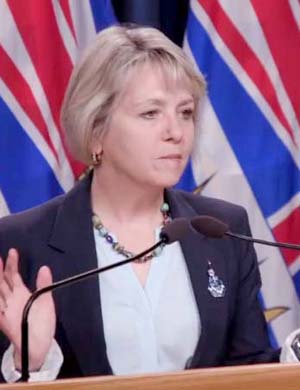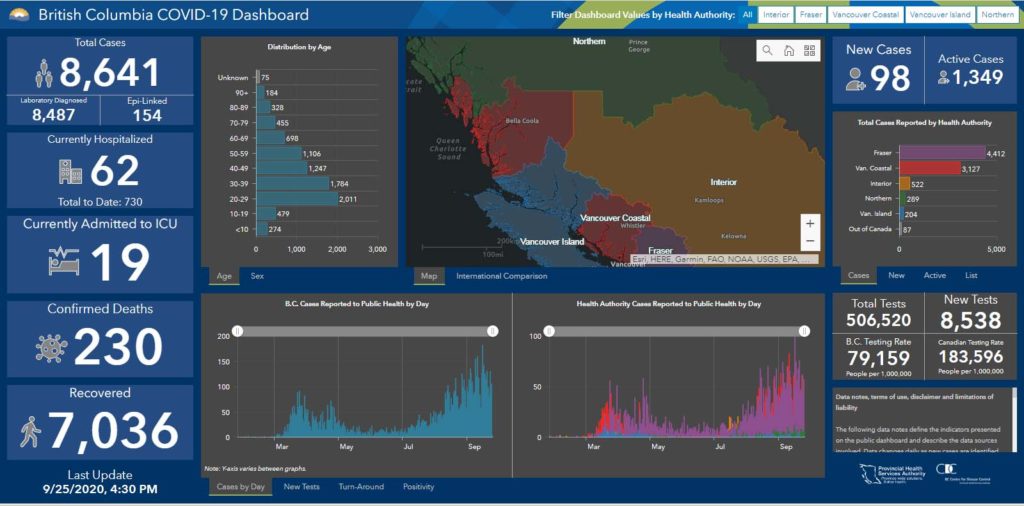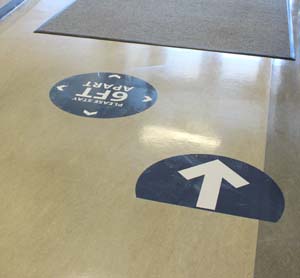Friday September 25, 2020 | VICTORIA, BC
Socioeconomic health analysis | by Mary P Brooke, B.Sc., Editor | Island Social Trends
“People within the Island Health region continue to do an exceptional job in keeping the virus rates low in our communities,” said Dr. Richard Stanwick, Chief Medical Health Officer, Island Health, in a statement to Island Social Trends this afternoon.
Despite signs of a second wave elsewhere in Canada, this week Island Health went three days without a new case (September 22 to 24), with today just one new case, only seven active cases, and 204 cases in total during the pandemic on Vancouver Island.
“We are not experiencing the same dramatic increase in COVID-19 cases that’s happening in other parts of the country, or even the mainland, so that’s really good news,” Dr Stanwick said.

From the beginning of the COVID-19 pandemic the case counts on Vancouver Island have been low compared to more densely populated areas on the Lower Mainland. This week Provincial Health Officer Dr Bonnie Henry implied that population density is a key factor.
This morning Dr Stanwick said on local radio that people have really been paying attention to Dr Henry’s public health guidance. But not to be complacent. The virus can very quickly get out of control and easily spread. The way to continue a flat curve is for testing and contact tracing to be done effectively, as well as everyone doing their part with the required public health measures.
The islander way:
Islanders are generally particularly keen about getting outdoors for recreation, enjoying a more balanced lifestyle in terms of indoor-outdoor and job load. Seeking good health is part of what we do here.
We are doing the required pandemic-style physical distancing, washing our hands frequently (see video on washing hands — how and why), wearing a face mask when 2-metre distance cannot be maintained when around people outside your social bubble, and staying home if we’re sick.

People are working from home where and when they can.
The schools are restricting the number of people who mix-and-mingle (and high school students only attend part-days), and most workplaces and job sites operate spaciously and with protocols in place for physical distancing.
Most of us on Vancouver Island value this wonderful island we call home, and just as we try to protect the environment here, we also take good care of ourselves.
We are resilient as a population; even with all the modern conveniences there is something about being ‘stranded’ on an island (i.e. needing transportation to leave it) that makes us tend to our own needs and those of our neighbourhoods.
Island cultures in general (e.g. our own Gulf Islands in BC, Prince Edward Island, England, Australia, Hawaii and others) have over decades and centuries developed distinct cultures due to the isolation that is borne of water on all sides.
The travel factor:
As well, many islanders have proposed over the now six-month-pandemic and counting, that with travel being one of the key ways that the COVID-19 virus is introduced anywhere, that being on an island perhaps gives that extra little bit of isolation factor.

Ridership was significantly down on the major ferries routes for months in spring and summer which reduced the risk of bringing the virus to the island from the mainland. Both road traffic and public transit use were significantly diminished during lockdown and still hasn’t reached full use again since the spring.
Air travel is operating again after near-zero activity, but still with most Canadians travelling domestically and then only as necessary for business or family needs. | Federal travel restrictions | Canada-US border closed

Most of the infections and deaths early on in the pandemic were a result of people travelling back from international locations and bringing the virus with them. And most of the early outbreaks and deaths in BC were in long-term care homes, oftentimes when a care worker inadvertently brought the virus within the care home walls.
It could be extrapolated that few of the care workers on Vancouver Island were socially mixing in the same places as returning travellers (or even had time for socializing in groups beyond their own bubbles), thereby not introducing infection into communal-living care homes.
No long-term care outbreaks on the island:

Another positive is, to date, that there have not been any outbreaks associated with any acute care facilities or long-term care homes within Island Health, explained Dr Stanwick. For him, that’s “one of the most encouraging signs that the measures we’re taking continue to work”.
In long-term care homes and acute care facilities — all on the Lower Mainland (in Vancouver Coastal Health and Fraser Health) — there are presently 10 active outbreaks.

As of yesterday, there have been 822 COVID-19 infections in long term care in BC this year (487 among residents and 335 staff), as itemized by Dr Henry.
The numbers:
For year to date (January 1 to September 25, 2020) there have been 8,641 test-positive cases (including 154 epi-linked); of those, 204 have been on Vancouver Island (2.4%). Today there were 98 new cases in total, including one on Vancouver Island (30 to 39 year age group).
Today there are 1,349 active cases in BC and 3,533 people are self-isolating (with all the life interruptions that entails). There are 62 people in hospital (none in Island Health), with 19 of those patients in ICU or acute care; 730 people have been in hospital to date this year due to COVID-19.
There was one new death in BC today due to COVID-19, bringing the total to 230 (total of five in Island Health). Every death by COVID-19 also has a significant impact on families and caregivers, neighbours and communities.
In BC a total of 730 have been hospitalized this year due to COVID-19, with 25 of those on Vancouver Island (3.4%).

A regional perspective of cases by Health Service Delivery Area in BC shows that here on Vancouver Island the cumulative rate per 100,000 population of COVID-19 cases is the lowest. In the south and central areas of South Vancouver Island rate rate is between 0.1 and 25 (see map). The north island region is in the 50- to 75-case range.

For comparison — in the Okanagan (where there was notable transmission during the summer in Kelowna) the rate is 75 to 100 per 100,000 population. The Lower Mainland with high density populations in Greater Vancouver, Burnaby, Surrey and Coquitlam/Port Moody areas is in the 100+ range.

No school outbreaks on Vancouver Island:

There have been no cases in schools on Vancouver Island, and just 19 in BC overall, said Dr Stanwick today.
“If it’s not there in the community, it’s not going to get into our schools,” said Dr Stanwick today.
With the many health and safety protocols in place in schools, Dr Henry has often said that the controlled environment is safe for teachers, students and staff. That includes limited class group sizes (cohorts), wearing face masks in common areas like hallways, and frequent hand washing. Some schools are limiting the number of students who can use a bathroom at any one time.
Team work:
“The public is holding up their end by doing social distancing, physical distancing, and observing the barriers. We’re going to do absolutely everything to match it with the contact tracing abilities and the testing,” says Stanwick.
“Having people lined up on the sidewalk is not the way to go,” says Stanwick about access to the testing centres. Different things are being tried for providing a better process.
Staying vigilant:

“It is important that people don’t let down their guard and that we are mindful the situation could rapidly change,” says Dr Stanwick.
“That’s why it’s critical we continue to take precautions to protect ourselves and our loved ones by physical distancing, washing our hands regularly and practicing good cough etiquette.”
If you’re sick, stay home:
If you’re sick, stay home and complete the BCCDC self assessment survey for COVID-19 to determine whether you need a test — that’s the reminder from Island Health today.
Politics helps public health:
On Monday, legislation will be up for a vote in the House of Commons that will make 14 days of paid sick leave available to Canadians who need it during COVID-19 and any requirement to self-isolate or stay home with suspected symptoms.

Even that is an idea based out of Vancouver Island, as pushed by John Horgan as BC Premier among the other premiers over the past few months, as a pressure on the federal Liberal government to provide that sensible backup to a widespread public health request to ‘stay home if sick’.
Federal NDP Leader Jagmeet Singh and his fellow MPs will be supporting the motion on Monday in Ottawa (as announced this afternoon). This serves to not only ensure that the paid sick leave (and morphed CERB financial safety net) get passed, but also prevents any trigger to an election this fall (reducing that extra layer of stress for people during the pandemic).

===== LINKS:
BC Centre for Disease Control COVID-19 data
Island Health – COVID information




